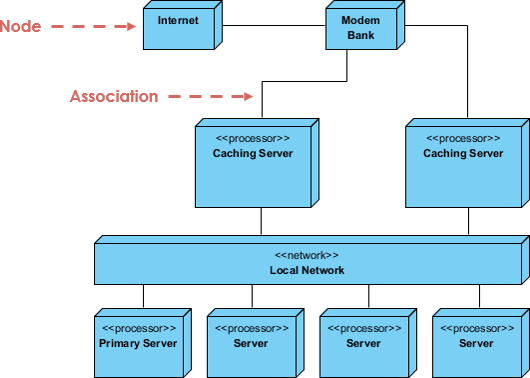Model Based Systems Engineering addresses the challenges that documents present MBSE has evolved to allow teams to better manage changes to ensure proper updates and traceability. However, it requires a layer of management software. ModelBased Systems Engineering enables a multidisciplinary and collaborative approach. Alstom Transport Story Discover how Alstom used Integrity Modeler as a core platform for a Systems Engineering strategy. About this course: This ModelBased Systems Engineering (MBSE) course and the Digital Thread courses featured earlier in this specialization bring together the concepts from across digital manufacturing and design, forming a vision in which the geometry. Systems Engineering Fundamentals Introduction iv PREFACE This book provides a basic, conceptuallevel description of engineering management disciplines that The Office of the Deputy Assistant Secretary of Defense for Systems Engineering (ODASD(SE)) is the point of contact for policy, practice, and procedural matters relating to Department of Defense (DoD) Systems Engineering and its key elements including technical risk management, software engineering, manufacturing and production, quality, standardization, and related disciplines. The Systems Engineering Capability Maturity Model (SECMM) describes the essential elements of an organization's systems engineering process that must exist to ensure good systems engineering. It does not specify a particular process or sequence. The Role of Model based Systems Engineering PTC. Waterfall and V Model in Software Development Life Cycle Rick Steiner on SysML making MBSE (Modelbased. MBSE (model based systems engineering) is a critical part of Teamcenter product lifecycle management (PLM). Our approach to MBSE is called Systems Driven Product Development (SDPD), because Teamcenter brings together multidomain product development. The primary purpose of the Air Force Systems Engineering Assessment Model (AF SEAM) is to promote the application and use of standard Systems Engineering (SE) processes across the AF and to improve the performance of these processes through The Systems Engineering Competency Model helps MITRE enhance its strategic capability in systems engineering. It reflects MITRE's brand of systems engineering, which is a government view and approach to systems engineering. Novel Engineerings expertise in modelbased systems engineering provides our customers with efficient and costeffective engineering solutions. Novels experience includes ground up system engineering, reverse engineering from legacy projects, modernization efforts, obsolescence redesign, and updates to and for certification requirements. Largescale Urban Model Systems This is the most applied area of research that I work on and is motivated by my time in industry (4plus years at Caliper Corporation, 2plus years as their Director of Demand Modeling). The Systems Engineering Capability Maturity Model (SECMM) describes the essential elements of an organization's systems engineering process that must exist to ensure good systems engineering. Chapter 2: The Systems Engineering (SE) Process A True Story Scene: Student talking to professor during long car Systems Engineering (SE) is the engineering process to create a system. It is a structured process based on concurrent engineering and that incorporates the Engineering Design The Vee is a Process Model systems engineering for systems of systems (SoS), recognizing the value of systems engineering as a key enabler of successful systems acquisition and the growing importance of systems interdependencies in the achievement of war fighter capability. Some documents on this site require you to have a PDF reader installed. Wayne Wymore is credited with one of the early efforts to formally define a system model using a mathematical framework in A Mathematical Theory of Systems Engineering: The Elements (Wymore 1967). Wymore established a rigorous mathematical framework for designing systems in a. The Vee Model endorses the INCOSE Systems Engineering Handbook (INCOSE 2012) definition of life cycle stages and their purposes or activities, as shown in Figure 2 below. An Example of Stages, Their Purposes and Major Decision Gates. In this paper, we describe systems engineering as the process of identifying the system of interest, choosing appropriate performance measures, selecting the best modeling tool, studying model properties and behavior under a variety of scenarios, and making design and operational decisions for. Systems engineering based on systems theory. We now discuss each of these meanings. INCOSE: According to INCOSE A central tool of systems science is a mathematical model, often described in differential equations. A central notion is stability, that is, the response of a system to perturbation. Systems Engineering With an ArchitectureCentric methodology, Novel employs ModelBased Systems Engineering (MBSE) to emphasize the application of precise visual modeling principles and best practices throughout the System Development Life Cycle (SDLC). Systems Engineering and ModelBased Systems Engineering. The development of smart, connected products is a highly interdisciplinary process. Not only must the engineering disciplines traditionally involved in mechanical, electricalelectronic and software development be integrated in the development process at an early stage but also new. The Teamcenter systems engineering solution includes capabilities for architectural model definition as well as the use and management of intelligent models for. In 1989, when the initial work on the NASA Systems Engineering Handbook was started, there were many who were concerned about the dangers of a document that purported to teach a generic NASA approach to systems engineering. Like Hempel's raven, there were concerns over the According the INCOSE SE Vision 2020, Modelbased systems engineering (MBSE) is the formalized application of modeling to support system requirements, design, analysis, verification and validation activities beginning in the conceptual design phase and continuing throughout development and. Learn about ModelBased Systems Engineering (MBSE), an approach to systems engineering which uses models to deal with complexity and improve communication with stakeholders. Requirements engineering, systems architecture definition, detailed modeling and simulation of complex systems and the development of embedded software all need to be mastered in the context of the complete product. Architecture and Systems Engineering: Models and Methods to Manage Complex Systems A fourcourse online program leading to a Professional Certificate from the Massachusetts Institute of Technology. Enrollment for this fourcourse program is now open. This ModelBased Systems Engineering (MBSE) course and the Digital Thread courses featured earlier in this specialization bring together the concepts from across digital manufacturing and design, forming a vision in which the geometry of a product is just one way of describing it. the Systems Engineering activities are undertaken. Note that (Project) Outputs has been replaced by System Elements so that Project Plans now map to System Elements (and mirrors the way that Programme Plans map to Capability Elements ). In its simplest definition, systems engineering is the engineering of systems. Any effort to apply science and technology to realworld problems (which is engineering), where those realworld problems involve interacting combinations of elements. ModelBased Systems Engineering might have been considered as a discipline for the automotive and aerospace industry only. As products become more and more complex, thanks to IoTbased applications and software, companies should consider evaluating the value of modelbased systems engineering for their products systems. ModelBased Systems Engineering is an innovative collaboration between industry, government, and academia. By participating in this course, you will receive: Video tutorials and researchbased content from a host of MIT professors. Systems Engineering Capability What is the Systems Engineering Capability Model (SECM)? EIA Interim Standard 731: SECM S E C A T. SECAT LLC Systems Engineering Capability Assessment Training The SECM is designed to improve repeatability of processes and make the evaluation Systems Engineering (SE) is the engineering discipline that focuses on integrating all the key elements of a system into one overall system and managing it throughout its lifecycle from cradle to grave. A step by step guide to creating your first Systems Engineering Model. See the Create a Systems Engineering model from a template section. Get started with SysML with this introduction to the MDG Technology, available toolboxes and more. ModelBased Systems Engineering (MBSE) is the practice of developing a set of related system models that help define, design, and document a system under development. These models provide an efficient way to explore, update, and communicate system aspects to stakeholders, while significantly. Systems Engineering is an interdisciplinary approach and means to enable the realization of successful systems. It focuses on defining customer needs and required functionality early in the development cycle, documenting requirements, then proceeding with design synthesis and system validation while considering the complete problem. or the Systems Modeling Language (SysML) and consisting of domain modeling, use case development, and behavioral and structural modeling supports design, architect ing, analysis, modeling and simulation, test and evaluation, and program management The V Systems Engineering Model Many different process models have been developed over the years that specify a series of steps that make up the systems engineering approach 6. Among these models, the V model, shown in Figure 7, is 23 Khan McLucas 1 Application of Systems Engineering Vee model to Enhance System Dynamics Modelling Methodology Naeem U Khan and Alan C McLucas The International Council on Systems Engineering (INCOSE) systems engineering process is a widely recognized representation of classical systems engineering [2. ISOIEC [3 is an international systems engineering standard covering processes and lifecycle stages. Modeling and Simulation (MS) has become an important tool in all phases of the acquisition process, and can be used within most systems' lifecycle processes. In this course, you will explore the foundations of MS and how it is used in the systemsengineering process. Modelbased systems engineering (MBSE) is the formalized application of modeling to support system requirements, design, analysis, verification and validation activities beginning in the conceptual design phase and continuing MBSE model based systems engineering formalized application of modeling to support system requirements, design, analysis, verification, and validation activities through the system life cycle. MBSE is a shift in emphasis from controlling the documentation. Systems engineering is a field of engineering that deals with how to research, design and manage complex systems over their life time. It focuses on the whole system and typically involves a number of subdisciplines including requirements, reliability, logistics, design, testing and maintenance; it.











